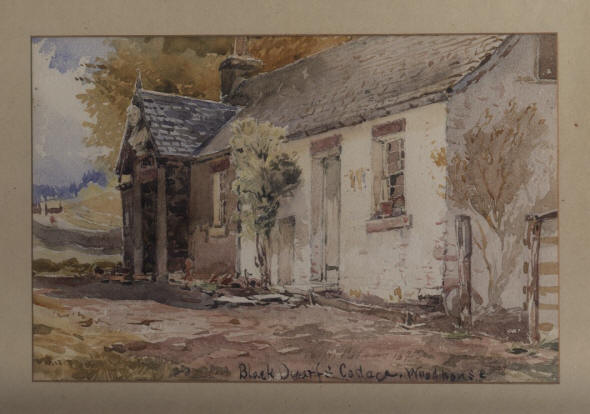BOWED DAVIE RITCHIE, as the
prototype of Sir Walter Scott’s Black Dwarf was called, died in
1811, and lies buried in Manor churchyard. All of him is not there,
however, as many years ago the bones of his legs were exhibited in the
farmhouse of Woodhouse, in the neighbourhood. These bones possess a
history, besides having from their curvature acquired for their owner
his descriptive sobriquet.
A rumour had gone abroad, in the
resurrectionist times, that Davie’s body had been disinterred soon after
his death, and taken to Glasgow to be dissected; but when his sister
died, 1821, the occasion of her burial was, naturally, considered a
suitable opportunity for testing the truth of the rumour, which was then
discovered to have had no foundation. The leg bones, being objects of
curiosity, were not interred, but were detained above ground, and at
length found their way in reality to Glasgow, where the proprietor of
Woodhouse was then resident, but they were afterwards returned to that
place.
In Horoe Subsecivcae by Dr.
John Brown, there is a curious account of the Black Dwarf’s
bones, with a figure of the femur and tibia of the left
limb. Dr. Brown says:- "They were given to me many years ago by the late
Andrew Ballantyne, Esq. of Woodhouse, and their genuineness is
unquestionable." A friend who furnished him with some particulars of
Davie’s life, stated that "his legs beat all power of description; they
were bent in every direction, so that Mungo Park, then a surgeon in
Peebles, who was called to operate upon him, said he could compare them
to nothing but a pair of corkscrews." His arms were of uncommon
strength. This forlorn and misanthropic creature was introduced, in
1797, by Dr. Ferguson to Walter Scott, then a barrister of
six-and-twenty years of age.


